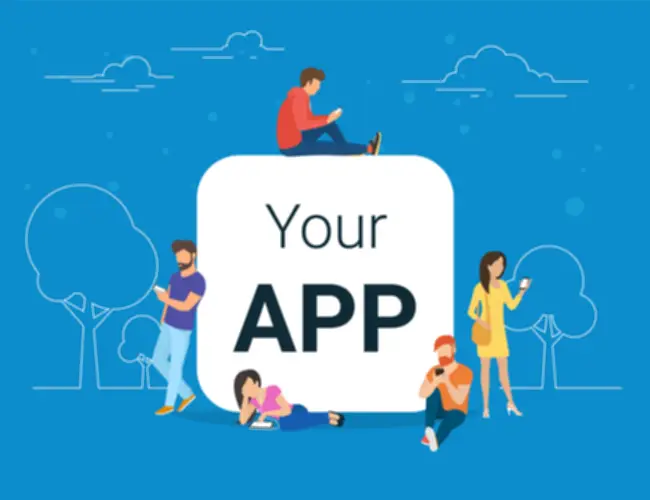Creating AI initiatives and blending them into existing ecosystems is a complex process with multiple operational implications. Many challenges must be thought of before choosing the right database. Apart From robust integration capabilities, cost-effectiveness and scalability are also key necessities today. Following these best practices sets up a strong infrastructure that adapts to your corporation wants, keeping your database efficient and efficient.
PostgreSQL is appropriate for a variety of applications, from small internet purposes to large enterprise systems. It is particularly useful in purposes that require a excessive degree of information integrity, performance, scalability, and advanced analytics capabilities. PostgreSQL is extremely extensible as its operation is catalog-driven, i.e. data is saved in databases, columns, tables, and so on. PostgreSQL not solely holds an increased amount of information in its catalogs but also particulars on the info sorts, access strategies, functions, and so on. You may even go so far as to put in writing your codes from totally different programming languages without recompiling your Database, and define your knowledge sorts.

PostgreSQL is an object-relational database system that extends the SQL language mixed with many options to effectively store and scale difficult information workloads. It supports both SQL (relational) and JSON (non-relational) querying, making it a flexible Operational Intelligence choice for a wide range of purposes. Clearly, PostgreSQL offers many advantages that can improve your development course of.
Make sure you’re working with newer PostgreSQL versions for better parallel processing. Also, efficiency could vary primarily based on queries and information, so check new configurations and adopt an iterative method. The database is the foundation of machine learning, powering everything from training AI fashions to delivering enterprise insights. However with so many choices to select from, how will you know which one really aligns along with your goals?
Multi-Version Concurrency Management allows for concurrent studying and writing of tables, blocking for much less than concurrent updates of the same row. To implement partitioning in PostgreSQL, use declarative partitioning by defining a partitioned desk with partition keys. This setup aids in environment friendly knowledge retrieval and management as your database scales. Scaling databases can turn into costly as information quantity will increase, requiring more infrastructure.

We can help you properly mannequin, migrate, handle, monitor, govern and protect your information and software ecosystem. Knowledge warehousing and business intelligenceWell suited for data warehousing and enterprise intelligence duties, Postgres helps advanced analytics and information visualization. When you concentrate on beginner-friendly platforms for first-time website https://www.globalcloudteam.com/ homeowners, you’re probably excited about WordPress. Nonetheless, to extract most worth from WordPress, you continue to need to have a transparent understanding of how a few of its primary components perform. For example, if you’ve been using WordPress for your website for quite some time now, it’s most likely a good time to gain an understanding of how WordPress databases perform. It may be integrated with any software that carries out mathematical operations corresponding to Matlab and R.
- The default value of the shared buffers from version 9.three onwards is 128 MB.
- PostgreSQL is extremely extensible as its operation is catalog-driven, i.e. information is stored in databases, columns, tables, and so forth.
- He helps educate and assist present and future NetApp Instaclustr prospects on data layer problems as they venture into event-driven structure or broaden existing use circumstances.
- PL/PGSQL is a local procedural language provided by PostgreSQL which has completely different fashionable features.
Sharding
Its scalability and concurrency options ensure efficient dealing with of day by day operations, including billing, customer data management, and community resource monitoring. Sharding distributes data throughout multiple database situations, whereas partitioning splits data within a single database. Sharding enhances horizontal scaling by distributing load, whereas partitioning optimizes question efficiency within one server. Each are used for scalable knowledge administration however serve completely different functions.
For instance, developers who work within the when to use mongodb vs postgres healthcare or financial industries can use PostgreSQL to adjust to HIPAA or PCI-DSS laws. PG also provides computerized failover and restoration, to assist builders ensure the availability of their functions in case of failures or disruptions. This means that the database engine can detect when the first database is not available and may switch mechanically to one of the standby databases, without human intervention. This can help to keep away from downtime, knowledge loss, or person inconvenience, and to keep the purposes working and accessible to the customers.
Its open-source nature offers you with a wealth of group assets, while advanced indexing options and strong assist for complicated queries make it extremely versatile. Vertical partitioning can enhance performance and manageability of your database. By splitting large tables into smaller, more manageable items, you’ll have the ability to isolate workloads and enhance query performance. This method can also simplify information maintenance and archiving, making it easier to make sure that your application runs smoothly as information grows. PostgreSQL’s stability, scalability, and knowledge integrity make it a robust and feature-rich database administration system.
Postgresql Features And Structure
Planning for scalability requires cautious database schema and infrastructure design. The objective is to distribute information evenly across partitions or shards to reinforce efficiency and resource effectivity. Ongoing upkeep is significant to maintain performance aligned with evolving information patterns. Common monitoring and changes are needed to forestall uneven distribution and guarantee optimal efficiency. For more insights on managing database efficiency, examine the way to allow PostgreSQL performance logging. When the goal is to distribute information evenly throughout partitions, hash partitioning is effective.

To be honest, MySQL, MariaDB and Firebird every have a few of these to various levels, however solely PostgreSQL helps all of them. PostgreSQL offers native support for geographic and spatial knowledge, allowing for spatial queries and evaluation. This is especially helpful in applications that require distance calculations, geocoding, and map visualization. PostgreSQL provides a strong full-text search engine that enables for superior looking out and querying of textual content content. This is useful in purposes that require text searching of paperwork, logs, and internet content material.
Utilizing multi-version concurrency avoids conflicts and maintains knowledge integrity whereas allowing quite a few transactions to entry the database without delay. PostgreSQL is very scalable and might handle large volumes of data and a excessive number of concurrent transactions. It also provides desk replication and partitioning options to additional improve efficiency in intensive load scenarios. PostgreSQL provides the flexibility to partition tables, which lets you physically cut up knowledge into a number of partitions. This improves question efficiency and makes it easier to handle giant volumes of data by breaking it into smaller, extra manageable chunks.
Choosing between MySQL vs PostgreSQL depends on the precise utility. If you wish to obtain object-oriented features with a relational database, you can choose Postgres. On the other hand, if you would like to use an easy-to-use system to store tabular data and carry out basic performance, you presumably can go for MySQL. Adminer (previously known as phpMinAdmin) is a free, open-source database administration device that provides tons of useful features and a extra elegant UI (User Interface). You can easily deploy this handy database administration software in your server, and all you need to do is addContent its single PHP file, point your browser to it, and log in. With PostgreSQL, you can even create an expression index, which works on the outcomes of an expression or a function somewhat than just the worth of a column.
By splitting knowledge based on criteria like date or area, PostgreSQL can efficiently entry relevant partitions. At its core, PostgreSQL is an open-source relational database management system (RDBMS). It was initially developed at the University of California, Berkeley in 1986 as a analysis project led by professor Michael Stonebraker. Over the years, it has grown to turn into a robust and feature-rich database system with a large and lively development community. PostgreSQL has strong querying options, including support for recursive queries, common table expressions (CTEs), subqueries, complicated SQL queries, and window functions.


